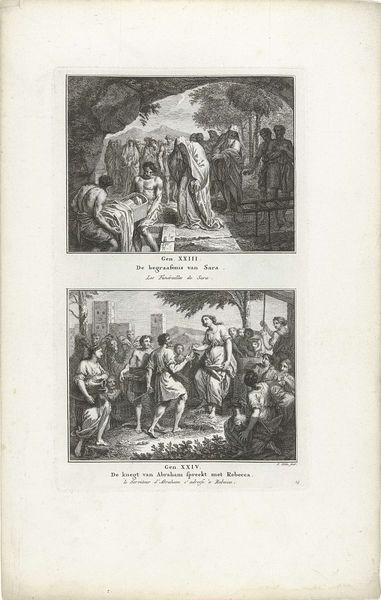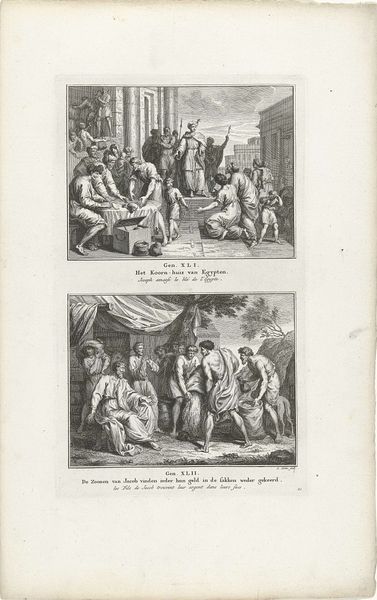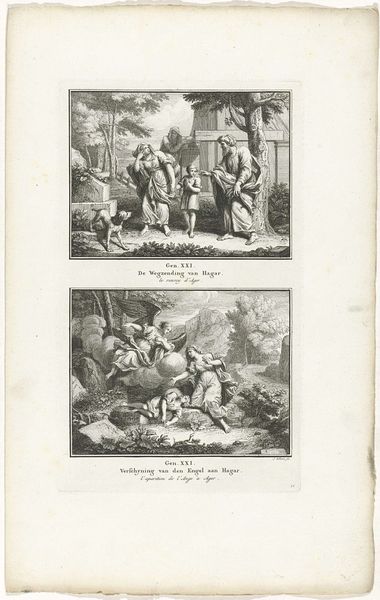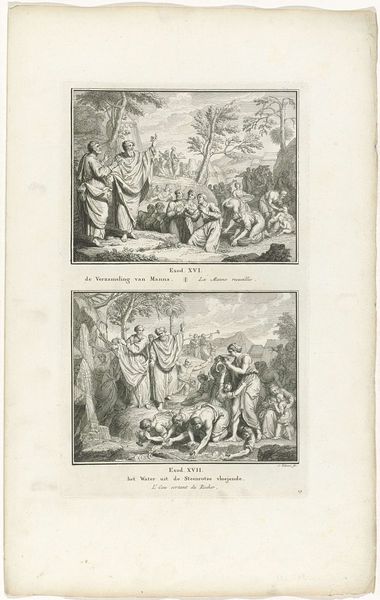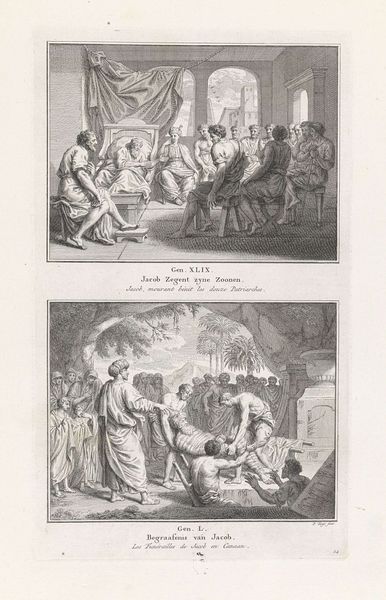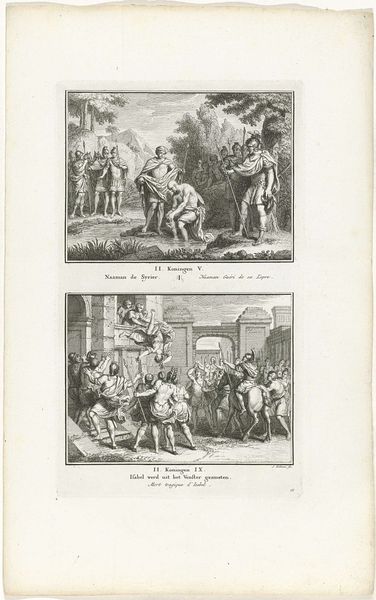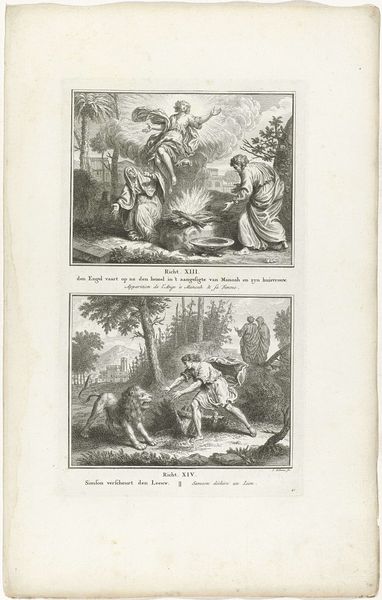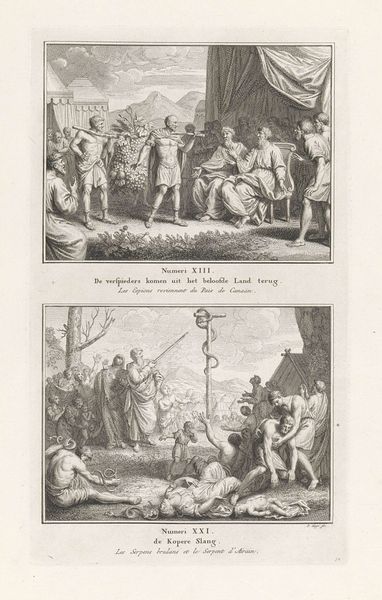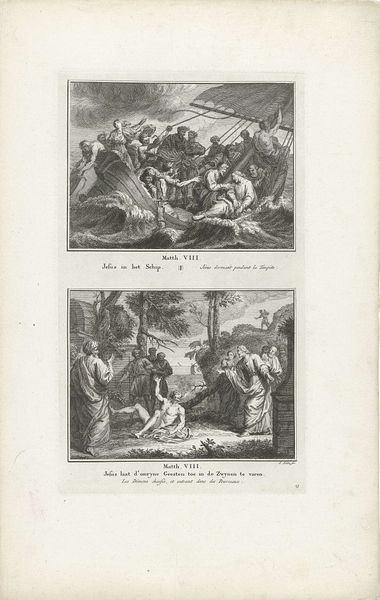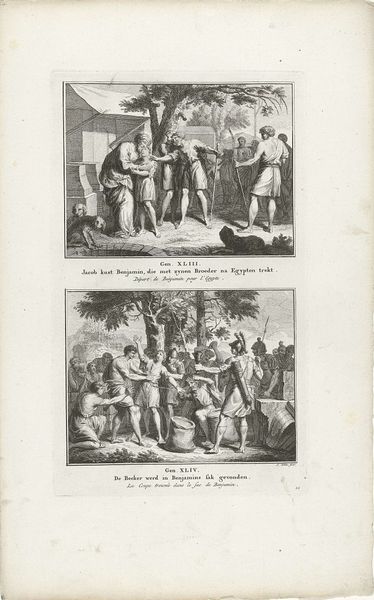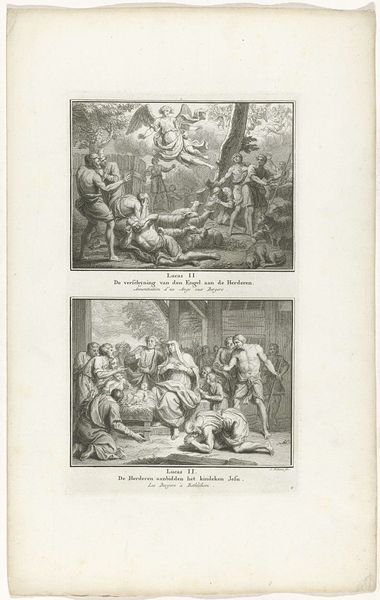
print, engraving
#
narrative-art
# print
#
old engraving style
#
figuration
#
history-painting
#
northern-renaissance
#
engraving
Dimensions: height 323 mm, width 191 mm
Copyright: Rijks Museum: Open Domain
Curator: Immediately, the stark contrast grabs me; it's quite striking. The stark division between the scenes creates an immediate visual tension. Editor: We're looking at a print from 1791 by Simon Fokke titled, "Jozef vertelt zijn dromen en Jozef door zijn broers verkocht" currently held in the collection of the Rijksmuseum. Fokke has depicted two scenes from the Book of Genesis. Curator: Yes, and that clear bifurcation allows Fokke to play with the emotional and narrative impact. The composition within each panel, though, follows a rigid structure. We observe orthogonal lines everywhere. Editor: Absolutely. Let's consider the symbolism present. In the upper scene, we see Joseph recounting his dreams to his brothers; the gathering suggests familial discord and budding jealousy, rendered in the slightly stiff classical style prevalent at the time. Look how the artist used shadow to enhance the mood! Curator: The shadowing is meticulously applied, creating an undeniable, dramatic effect, although one can discern formulaic repetition in the execution. The limited palette is a significant choice by the artist. Editor: Precisely, especially when you then consider the lower panel's portrayal of Joseph being sold into slavery. Note how that panel’s darker shading anticipates later baroque painting. Curator: While both tableaus seem self-contained, observe that Fokke masterfully connects the two scenes via line and texture; see how he guides your eye across them both? The visual unity overrides any symbolic dissonance that may be intended. Editor: Agreed, a sense of visual harmony prevails despite the turbulent narrative—betrayal, jealousy, all central to our human stories. I am particularly drawn to the expressions and posture in both scenes—there's a universal human drama there. Curator: Yes, that human drama is subtly suggested in these static forms and it really is only from analyzing the structural relationship that these emotional qualities can be understood. Editor: Seeing how this narrative carries forward across centuries in the cultural memory helps emphasize its significance.
Comments
No comments
Be the first to comment and join the conversation on the ultimate creative platform.
